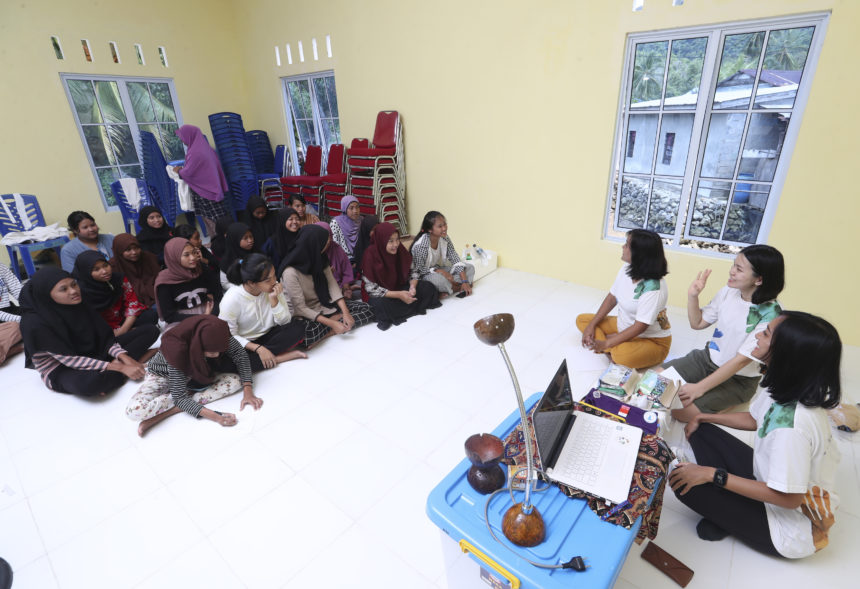In Kiabu Village there’s a lack of awareness regarding menstrual hygiene management among the villagers. Access to menstrual products is also difficult, considering the remote location of the fishing village. The only available menstrual product here is single-use sanitary pads that can easily be found in warung (kiosks), but they are priced higher than pads at the supermarkets in urban areas.
For comparison, the average price for a pack of 16 pads is Rp. 20,000 in Kiabu. Meanwhile, the same product only costs Rp. 12,000 if you buy it in the supermarket. Also worth noting, the monthly income of people in Kiabu is lower than people who work in the city. Majority of them work as small-scale fishers who make around Rp. 3,600,000 a month and the money is used to fulfil the basic household needs.
Other than being expensive, there are also potential health risks in using them. These menstrual pads contain lots of chemicals like pesticide and herbicide, chlorine and acetone that can cause irritations, allergies, hormonal dysfunctions and even cancers[1].
Even more, they are difficult to dispose of. In Indonesia alone, approximately 16.8 billion single-use pads are discarded each year,[2] with many of them end up in a landfill. Meanwhile in Kiabu, non-recyclable waste like used pads are incinerated, an environmentally unfriendly waste management practice that can affect the physical well-being of the community and lead to air, land and water pollutions.
As a solution to this issue, we came up with a new initiative early this year of introducing sustainable menstrual hygiene management to Kiabu residents. We invited female students and village women for our presentation of three alternative products to replace the single-use pads: cloth pads, period underwear and menstrual cup.
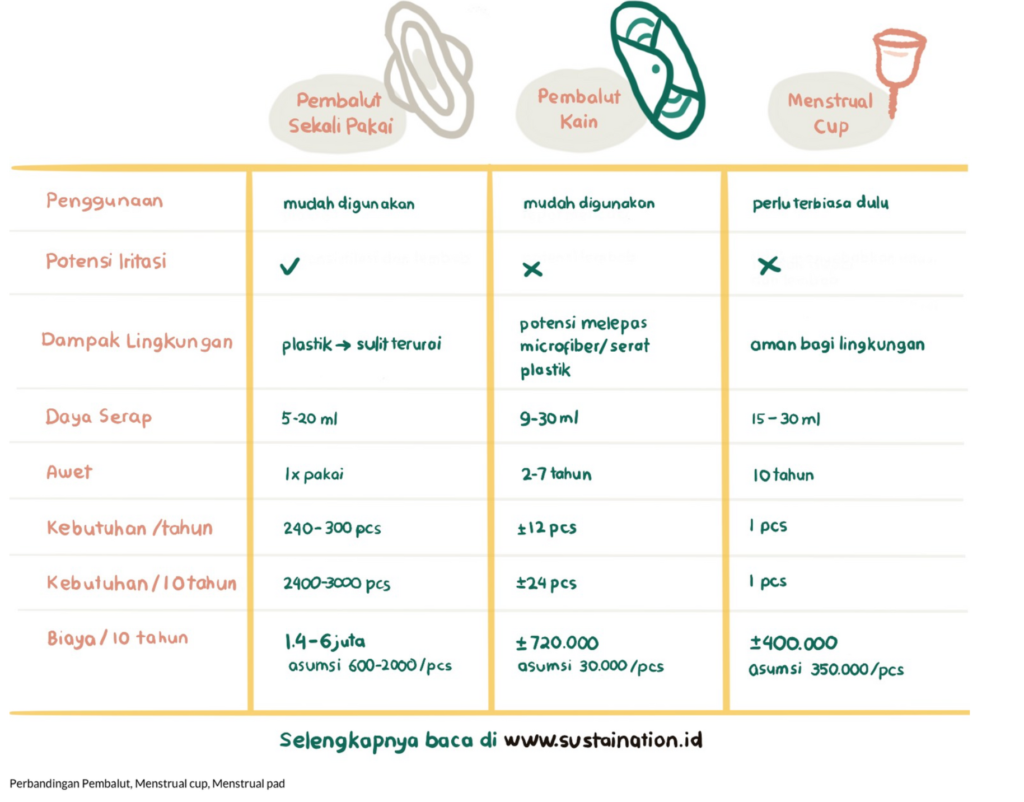
The first two aren’t exactly new things in Indonesia. Back then, before disposable menstrual pads entered the market people used cloth rags for their period, and these rags could be washed and used for the next menstrual cycle. They are now back on trend as people are becoming more eco-conscious and there are many iterations of the cloth rags now available on the market like the cloth pads that resemble single-use pads and period panties that are available in many shapes, colors and sizes. Menstrual cup is still relatively new in Indonesia, this elastic cup is made of silicone or latex rubber and can last up to 10 years. However, it’s still hard to find it here and it is quite expensive.
During our presentation we showed them these three products, explained a bit more about the menstrual cup as it was something that they had never seen before, we did a cost breakdown comparing disposable menstrual pads to the reusable alternatives and distributed samples of cloth pads and period underwear to the teen girls, each received either a pad or underwear.
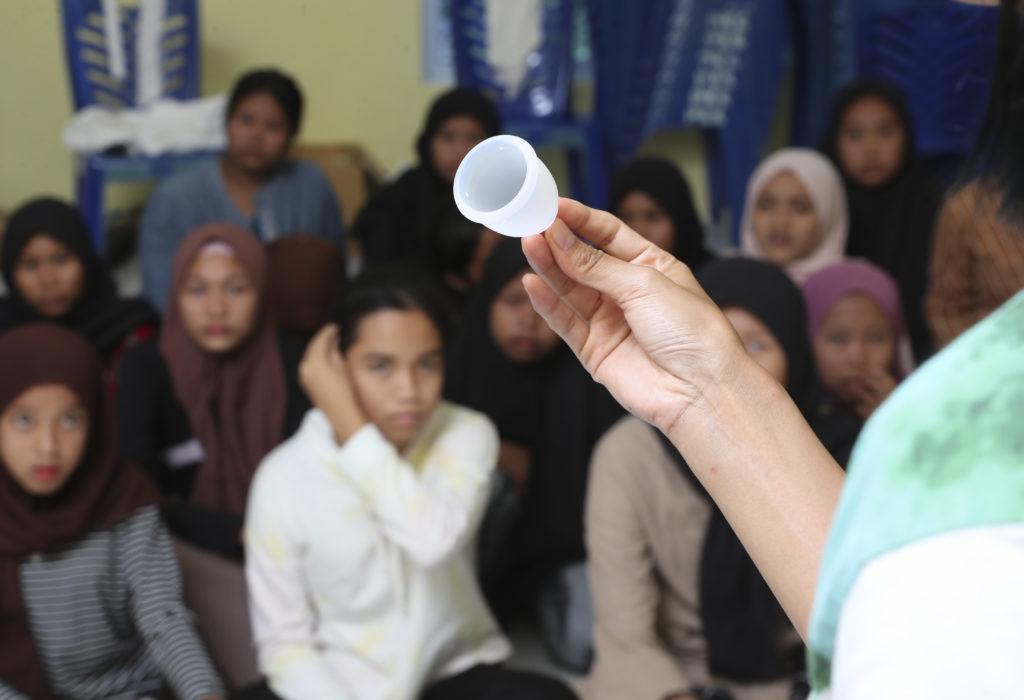
After we distributed the samples we told them to use them for three months and they would later fill out a survey about their experience. In July we sent out the questionnaire to the female students who were given the samples.
We got feedbacks from 8 period underwear users and 11 cloth pad users. There were supposed to be a total of 24 respondents, but five of them were not in town when we did the survey.
The period underwear respondents all agreed that the product was comfortable to use, they also unanimously chose washing as the disadvantage of using it. Similar responses came from the cloth pad respondents, they all agreed that the product was comfortable, but the wheat it came to disadvantages of using the cloth pad, their answers varied: 64% chose washing, 27% chose price and 9% didn’t answer.
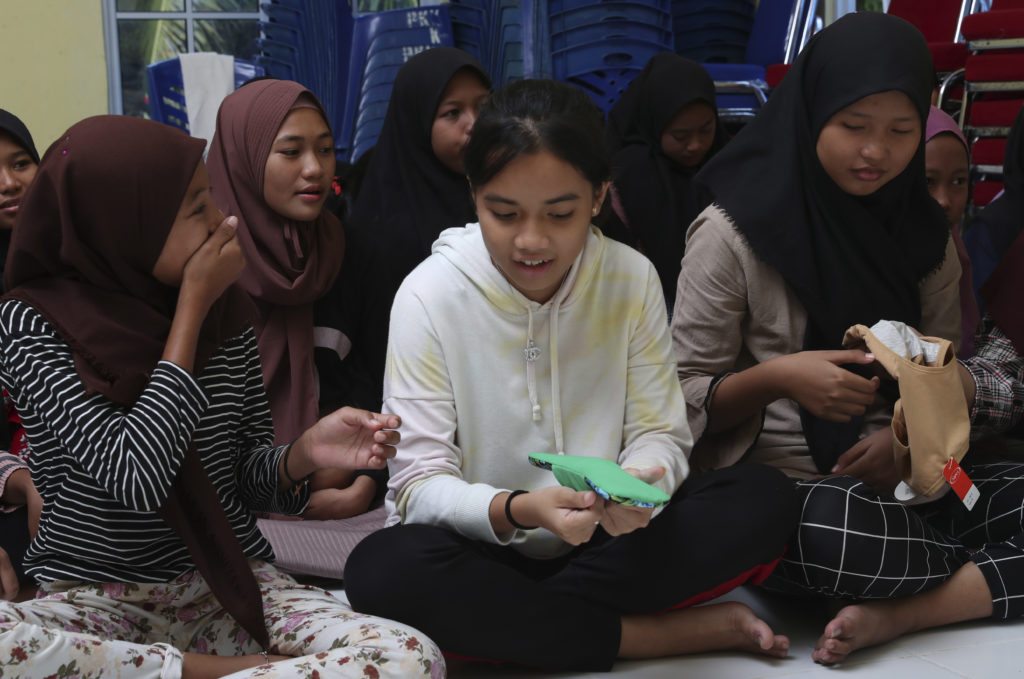
Besides raising awareness on sustainable menstruation, the long-term goal of this initiative is to teach Kiabu women how to make their own reusable menstrual pads from used, clean fabric, so in the questionnaire we also asked if they’d be interested in learning how to make their own cloth pads.
Out of the 19 respondents, almost 90% of them were interested in learning how to make reusable pads and period panties. Additionally, more than 80% out of the 19 respondents would continue to use the products.
From the data we can conclude that while the products were pleasant to use, washing them could be time-consuming and the products were more expensive to purchase initially. What we need to do next is to continuously educate them about the advantages of using reusable products, how it benefits the environment and their well-being.
Furthermore, seeing that majority of them wanted to learn how to make these products, we can have another upcycling training session in Kiabu teaching the Women’s Group how to make pads and period panties from used, clean fabrics, and teach them the proper way to wash and take care of these products. Who knows? Maybe in the future these women can sell their own cloth pads and period panties to the masses.
Sources:
[1] https://www.zerowastefrance.org/en/project/zero-waste-for-menstruations/
[2] https://www.mongabay.co.id/2021/01/02/begini-dampak-pembalut-sekali-pakai-bagi-kesehatan-perempuan-dan-lingkungan-hidup/
